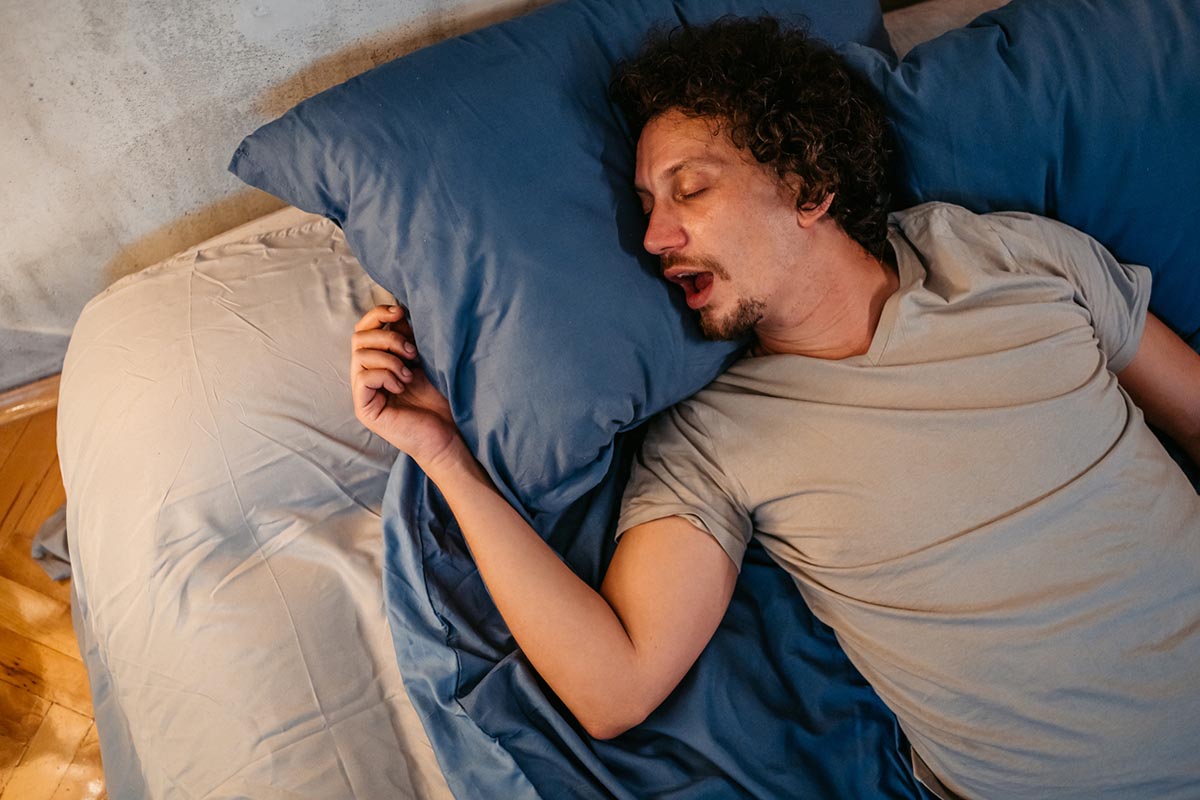Doxazosin for the Treatment of Nightmares: Does It Really Work? A Case Report
To the Editor: There have been numerous studies on the use of prazosin for nightmares, but data on doxazosin are very limited.1 It has been postulated that posttraumatic stress disorder (PTSD)-related nightmares arise from fragmentation of rapid eye movement sleep.2
Case report. Mr A, a 59-year-old combat veteran of the Vietnam War, was diagnosed with PTSD on Axis I according to DSM-IV-TR. His past medical history was significant for hypertension and benign prostatic hypertrophy (BPH). He was being treated with hydrochlorothiazide 12.5 mg for hypertension and sertraline 200 mg for his PTSD and DSM-IV-TR major depressive disorder, mild, without psychotic features. Mr A was treated with a number of medications for insomnia, nightmares, and disrupted sleep in the past with no benefit. Treatment with trazodone 200 mg and mirtazapine 7.5 mg at bedtime and quetiapine 100 mg at bedtime was discontinued because of side effects. On a follow-up appointment with his primary care physician, he was started on doxazosin 1 mg/d for his hypertension and BPH. Within 1 week of this, the patient was seen in the mental health clinic. He reported improved sleep over the past week. A military version of the PTSD checklist3 was administered to the patient 1, 4, and 8 weeks after the start of therapy. His medication was titrated from 1 mg/d to 4 mg/d. His response changed from extremely (score = 5) to a little bit (score = 2) on repeated, disturbing dreams of a stressful military experience, and his response changed from quite a bit (score = 4) to a little bit (score = 2) on repeated, disturbing memories, thoughts, or images of a stressful military experience. He was reassessed at 8 weeks, and his answers still stayed the same. Overall, the patient reported sleeping 6 to 8 hours daily, improved sleep quality, decreased frequency and intensity of trauma-related nightmares, and improved ability to function during the daytime. He was continued on doxazosin 4 mg/d, which helped him with the nightmares, hypertension, and BPH. Orthostatic hypotension was the only side effect reported in the initial days after starting therapy.
Prazosin and doxazosin are both α1-adrenergic antagonists used in hypertension and BPH.4 As they are α-adrenergic antagonists, they should also inhibit adrenergic activity in the brain of patients with PTSD.5 The high α-adrenergic activity seen in PTSD affects the prefrontal cortex, which is most likely responsible for the exaggerated fear response observed in PTSD.6,7 Hence, doxazosin should curb this response.7 Doxazosin is also known to help with erectile dysfunction, as it causes vasodilation and enhances blood flow to the area.8 This might be beneficial for veterans with PTSD who also have problems with sexual functioning. It is also safe to be used in the normotensive population, as it does not lower blood pressure significantly.9
Prazosin has a short half-life of 2 to 3 hours and has to be given twice daily. Doxazosin has a longer half-life, and its elimination half-life can be up to 22 hours.10 The controlled-release gastrointestinal therapeutic system (GITS) is also available and controls fluctuations in plasma drug levels. Whereas doxazosin needs to be started at a lower daily dose of 1 mg and then titrated up, doxazosin GITS can be started at 4 mg because of its improved side effect profile.10 Doxazosin GITS has been tested for its use in BPH, but the side effect profile would still be the same even if used for nightmares and PTSD.
More studies would be helpful in determining whether doxazosin is an effective alternative to the other medications for the treatment of insomnia and nightmares related to PTSD. If it is, it will be preferred because of the insignificant side effect profile.
References
1. De Jong J, Wauben P, Huijbrechts I, et al. Doxazosin treatment for posttraumatic stress disorder. J Clin Psychopharmacol. 2010;30(1):84-85. PubMed doi:10.1097/JCP.0b013e3181c827ae
2. Woodward SH, Arsenault NJ, Murray C, et al. Laboratory sleep correlates of nightmare complaint in PTSD inpatients. Biol Psychiatry. 2000;48(11):1081-1087. PubMed doi:10.1016/S0006-3223(00)00917-3
3. Wilkins KC, Lang AJ, Norman SB. Synthesis of the psychometric properties of the PTSD checklist (PCL) military, civilian, and specific versions. Depress Anxiety. 2011;28(7):596-606. PubMed doi:10.1002/da.20837
4. Hieble JP, Ruffolo RR Jr. The use of alpha-adrenoceptor antagonists in the pharmacological management of benign prostatic hypertrophy: an overview. Pharmacol Res. 1996;33(3):145-160. PubMed doi:10.1006/phrs.1996.0022
5. Geracioti TD Jr, Baker DG, Ekhator NN, et al. CSF norepinephrine concentrations in posttraumatic stress disorder. Am J Psychiatry. 2001;158(8):1227-1230. PubMed doi:10.1176/appi.ajp.158.8.1227
6. Arnsten AF, Mathew R, Ubriani R, et al. Alpha-1 noradrenergic receptor stimulation impairs prefrontal cortical cognitive function. Biol Psychiatry. 1999;45(1):26-31. PubMed doi:10.1016/S0006-3223(98)00296-0
7. Raskind MA, Peskind ER, Kanter ED, et al. Reduction of nightmares and other PTSD symptoms in combat veterans by prazosin: a placebo-controlled study. Am J Psychiatry. 2003;160(2):371-373. PubMed doi:10.1176/appi.ajp.160.2.371
8. Kaplan SA, DE Rose AF, Kirby RS, et al. Beneficial effects of extended-release doxazosin and doxazosin standard on sexual health. BJU Int. 2006;97(3):559-566. PubMed doi:10.1111/j.1464-410X.2005.05959.x
9. Lund-Johansen P, Kirby RS. Effect of doxazosin GITS on blood pressure in hypertensive and normotensive patients: a review of hypertension and BPH studies. Blood Press suppl. 2003;1(1):5-13. PubMed doi:10.1080/08038020310000078
10. Chung M, Vashi V, Puente J, et al. Clinical pharmacokinetics of doxazosin in a controlled-release gastrointestinal therapeutic system (GITS) formulation. Br J Clin Pharmacol. 1999;48(5):678-687. PubMed doi:10.1046/j.1365-2125.1999.00067.x
Author affiliations: Department of Psychiatry, Carilion Clinic, Virginia Tech Carilion School of Medicine, Roanoke.
Potential conflicts of interest: None reported.
Funding/support: None reported.
Published online: September 13, 2012.
Prim Care Companion CNS Disord 2012;14(5):doi:10.4088/PCC.12l01356
© Copyright 2012 Physicians Postgraduate Press, Inc.


